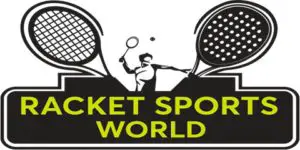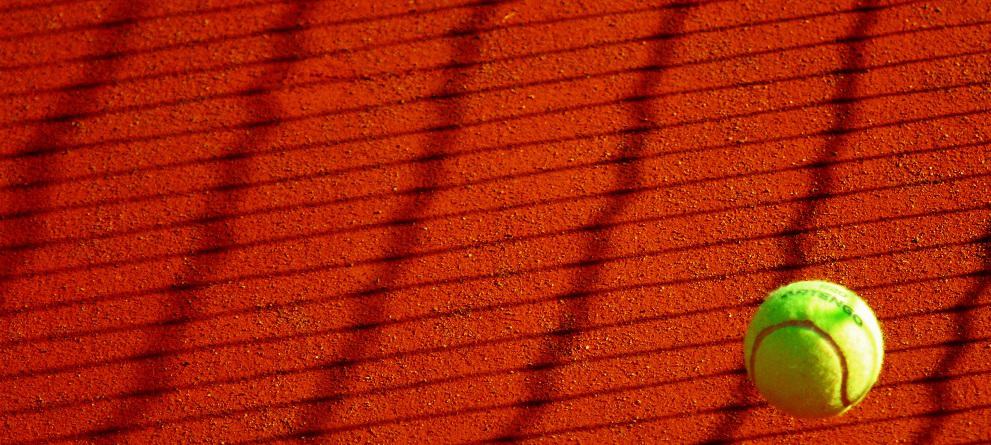There are several kinds of surfaces that can benefit your game when it comes to tennis courts, depending on what style of game you are playing.
However, you can practically play tennis on any court surface once you know your tennis play style. You can choose types of surfaces that will fit your game, and you can use them to your advantage in your tennis match.
There are three major kinds of court surfaces. All of these have their benefits and result in a different tennis ball bounce in every game.
Table of Content
These are the three types of tennis court surfaces:
- Grass Courts
- Hard Courts
- Clay Courts
Here’s a brief look at how the three tennis court surfaces behave and the differences between them.
Grass Court
Grass court is a traditional tennis court surface, and it is Wimbledon’s popular signature court. It was not a surface you will find these days because it is required to maintain works to keep the court in good condition.
A variety of ryegrass compositions are used to construct the grass courts, which vary depending on the competition. The ball will bounce lower and faster on grass courts, but the ball would bounce slower and higher on clay courts, depending on the surface.
You’ll need decent gripping shoes on grass and clay because they’re both slippery and make it easy to slide. The grass can change from a rich green to having only bare sports along the baselines during a tournament’s duration.
There is a limit to how much grass can withstand during a tournament and occasionally even during a match.
This surface is fast, and the ball bounces low, making rallies short. Grass courts require faster reaction times than clay or hard courts, which favors net players and those who serve and volley. The service is also more important than on other surfaces. These are pure grass compositions, and they are slippery courts.
Due to its slipping tendency, the ball often slides and rebounds low on these courts. In these courts, players must be fast to react. This indicates that players on grass courts must be experienced and quick.
The grass courts must be carefully maintained to keep the grass hydrated. Traditional tennis courts require more upkeep than hard or clay courts. When it rains, they get wet and slippery if not covered.
You need to smash the ball hard and low. These courts are generally slanted to drain water. Here, maintenance is costly.
Also Read:
- Why do Tennis Players Wear a Jacket Before & After a Match?
- Why do Tennis Players Put an Extra Ball in Their Pocket?
Clay Court
Clay courts are made of crushed and powder shale, brick, or stone. Surprisingly, it’s not actual clay, and grass courts are usually outside and weather-dependent.
Clay and grass tennis courts can dry up in hot weather and must be maintained. Both are affected by heavy rain and can take days to dry out, but a hard court dries up on the surface.
Because of this, the clay courts reduces the ball speed hit by strong hitters as it slows the pace of the ball, facilitating a return of the shot by an opponent.
This court takes away many benefits of large services, making it difficult for players who rely heavily on clay to dominate. The downside of a clay court is that it must be maintained moist at all times.
Otherwise, it would dry up quickly and cause hardness and roughness, making it impossible for the player to continue playing the game.
The tennis courts consist of several kinds of clay tones: Green, Red, Blue, Gray, Yellow and Maroon Tone.
They have a tough foundation. It has been determined that play in such courts is exceedingly challenging.
The slowest surface is regarded to be red clay courts. For the player, it becomes hard to hit the ball high, yet the green terracotta court benefits the players slightly faster.
Clay courts reveal the singularity of the ball bouncing and helps detect if a shot had been on or off the courtyard.
Hard Court
Hard courts, often constructed on macadam or concrete, are the most neutral of all tennis courts. In terms of speed, it is faster than clay and slower than grass.
The bounce is far larger than either due to the hardness of the ground.
As the term suggests, hard courts are constructed of uniformed, stiff materials with an acrylic surface coating.
This surface is quite popular all over the world since it generally provides an excellent even and ‘all-round’ playing experience, as well as greater consistency than other outdoor surfaces, and is, therefore, more durable. This type of surface allows the ball to travel at a slower speed than on grass courts.
Hard courts are faster than clay courts while also providing a high bounce and being very predictable due to the surface’s flatness and ease of maintenance.
Grass courts provide a surface where the ball travels at a slower speed than clay courts, while clay courts provide a surface where the ball travels at a faster speed than grass courts.
The International Tennis Federation considers the Hard Court an excellent surface for all sorts of players since it is a reasonable compromise between grass and clay courts.
Contrary to the ITF’s declaration, several professionals believe that the Hard Courts favor players who have a strong serve because the surface is still considered generally fast and baseline players who prefer long rallies because the ball bounce is high and predictable on these surfaces.
As we all know, grass used to be the most famous tennis surface on the globe, but that has changed with more people opting for hard court surfaces because of their minimal maintenance requirements and lower expenses. Hard and grass courts are more comparable than hard courts, and clay courts are to one another.
Hard courts offer a more consistent surface and bounce than clay and grass courts, and they don’t require as long of a drying period. A few minutes in the sun will dry a tennis court in minutes.
The only true advantage of playing on grass has overplaying on a post-tension concrete course is that it brings back fond memories. However, when tennis comes to maintenance and playing surface, hard courts continue to be the preferred choice.
Also Read:
- Why do Tennis Players Apologise for Hitting the Net Cord?
- Why do Tennis Players Adjust Their Racket Strings?
Carpet Court
There is a fourth type of surface on which tennis used to be played at one point. It goes by the name of carpet.
Tournaments on both, the ATP and WTA circuits have now been stopped on carpet for a variety of reasons but one of the biggest one has been issues with player injuries. We will cover carpet courts in greater depth in a separate article.
Final Words on Different Types of Tennis Surfaces
Tennis is played on three main surfaces but among them, clay and hard courts are two of the most common ones which are used at every level. Grass courts are rare to find because of the costs associated with its upkeep, making clay and hard as the go-to surfaces for tennis tournament organizers.


